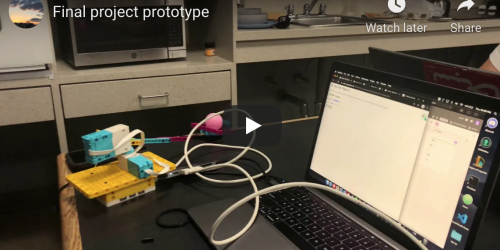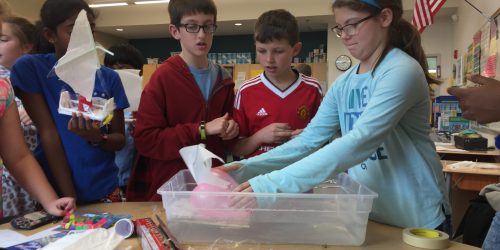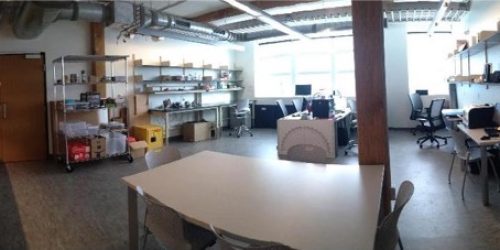by Laura Coughlin, CEEO STOMP Fellow
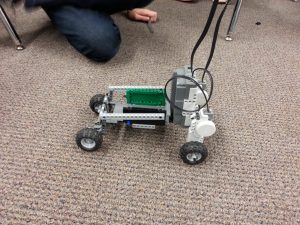
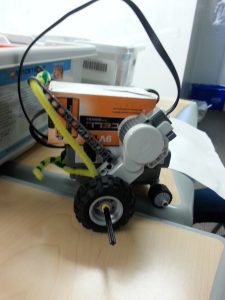
On Wednesday afternoons, the NXT robotics elective at the International School of Boston (ISB) holds its two-hour class, a class filled with 6th, 7th, and 8th grade students eager to learn the mysteries of programming. This past semester my STOMP partner and I had the pleasure of teaching in this classroom, covering a unit we developed on Robotics and the Environment. In this unit we taught students basic programming skills with an emphasis on using these skills to find sustainable solutions to the world’s environmental problems. The semester was filled with robotics challenges centered on resource conservation, climate change, pollution, and alternative energy, and culminated in students using what they learned to design and build a sustainable city.
Like many others before me, I got involved with STOMP as a broke college freshman desperately searching for employment. Since then I’ve taught seven semester-long STOMP classes and what I’ve found is that no two semesters of STOMP are the same. Each different unit and classroom come with its own advantages and challenges. The same was true for teaching at ISB. One advantage of this semester was that the robotics elective met for two hours, meaning that we had two full hours for each STOMP lesson, and we could choose our activities with almost no concern for class time. Having taught a semester’s worth of 40-minute lessons in a first grade classroom in the past, this extra time was a huge luxury, and really allowed us to delve into more complex programming challenges.
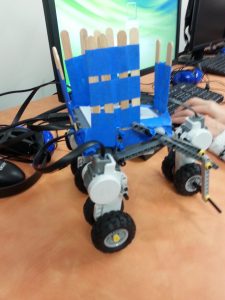
The opportunity to carry out longer, more complex lessons turned out to be perfect for this class, as my STOMP partner and I soon found that the kids knew more about environmental issues than we would have ever anticipated. Every question we asked during lesson introductions was met with a dozen hands in the air, and correct descriptions of everything from the greenhouse effect to the inner workings of a solar panel. The kids showed the same tenacity for learning in the robotics challenges, and by the half-way point of the semester, they had already mastered the use of NXT sensors, loops, switches, and other basic programming elements in their codes. As a result, one of our biggest challenges for the semester was continuing to challenge them.
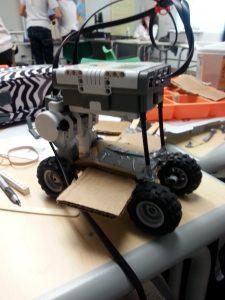
One of the last lessons of the semester, which focused on conservation of energy, was one of my favorites, as it challenged the kids more than any of the previous lessons, making it all the more rewarding to watch them succeed. We began the lesson by discussing non-renewable forms of energy, and the problems that arise from relying on this as our only source of power. We then had the kids work in pairs to design a robot to help someone conserve energy in their own home by reminding them to turn off the lights when no one is in the room. After much troubleshooting, groups arrived at a program using nested switches and multiple sensors to first check if the lights were on in the room (light sensor), and then to check if people were actually in the room (sound or ultrasonic sensor). The program instructed the NXT to make a sound, display a certain image, or perform a certain movement if the light was on in a room where no one was present, reminding the homeowner to go back and turn the lights off. The lesson went over really well with the kids, partially because of its complexity but also because of its relevance. As we wrapped up the lesson, we talked about current technology like motion-sensor lights and automated hand-dryers, and the kids were able to see how the same flow of logic that they had developed in their code was being used in technology today to conserve resources.
The final classes of the semester were spent on the final project, the creation of a sustainable city. Complete with solar powered street and traffic lights, large vehicles for carpooling, and buildings that utilized solar and wind energy, the students’ final project left me so impressed with both their creativity and enthusiasm, and with how much fun STOMP continues to be.
For more information about STOMP, visit stompnetwork.org

